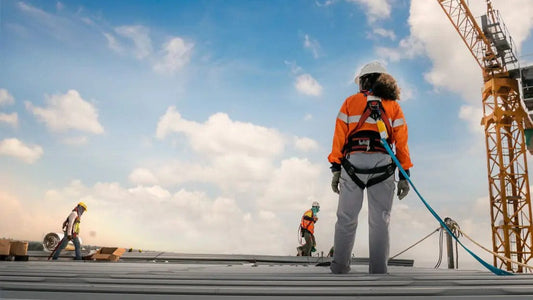
As winter blankets the construction sites with frost and snow, the challenges of executing concrete pours in cold weather become evident. Cold weather conditions can significantly impact the curing process of concrete, potentially leading to weakened structures and compromised durability. However, with proper planning and adherence to specific guidelines, contractors can successfully navigate cold weather concreting challenges. In this blog, we'll explore essential tips to ensure the success of your cold weather concrete pours.
1. Temperature Monitoring:
One of the key factors in cold weather concreting is monitoring the ambient and concrete temperatures. The American Concrete Institute (ACI) recommends that the air temperature should not fall below 40°F (4.4°C) during the placement and initial setting of concrete. Additionally, it's crucial to measure the temperature of both the concrete mix and the subgrade. Using temperature sensors and thermometers can help in maintaining the ideal conditions.
2. Concrete Mix Design:
Adapt your concrete mix design to suit colder temperatures. Increasing the cement content, using accelerators, and reducing the water-cement ratio can enhance the concrete's early strength development. Consult with a concrete mix design professional to ensure the mix meets the specific requirements of your cold weather project.
3. Insulated Forms and Blankets:
Protecting the freshly poured concrete is crucial to prevent rapid cooling and ensure proper curing. Insulate forms with materials like foam board or blankets to retain heat. Covering the concrete surface with insulating blankets immediately after placement helps maintain the necessary temperature for the curing process.
4. Windbreaks and Enclosures:
Cold winds can accelerate the cooling of freshly poured concrete. Installing windbreaks or temporary enclosures around the construction site can mitigate the impact of wind, creating a more controlled environment for the concrete to set and cure.
5. Concrete Curing Agents and Accelerators:
Using curing agents and accelerators specifically designed for cold weather conditions can expedite the setting time of concrete and enhance early strength development. However, it's essential to carefully follow manufacturer recommendations and dosage instructions to avoid any adverse effects.
6. Proper Timing and Scheduling:
Plan concrete pours during the warmer part of the day to take advantage of higher daytime temperatures. Additionally, consider scheduling concrete pours for consecutive days to allow for continuous curing and avoid interruptions that may compromise the concrete's strength.
Executing concrete pours in cold weather demands careful planning, monitoring, and the implementation of specific strategies to maintain optimal conditions for curing. By incorporating these essential tips, construction professionals can overcome the challenges posed by winter weather and ensure the long-term durability and strength of their concrete structures. Always consult with concrete experts and adhere to industry standards to achieve the best results in cold weather concreting projects.
ProContractor Supply carries a wide variety of products to help you conquer the winter! Call us today 1-800-604-0088




